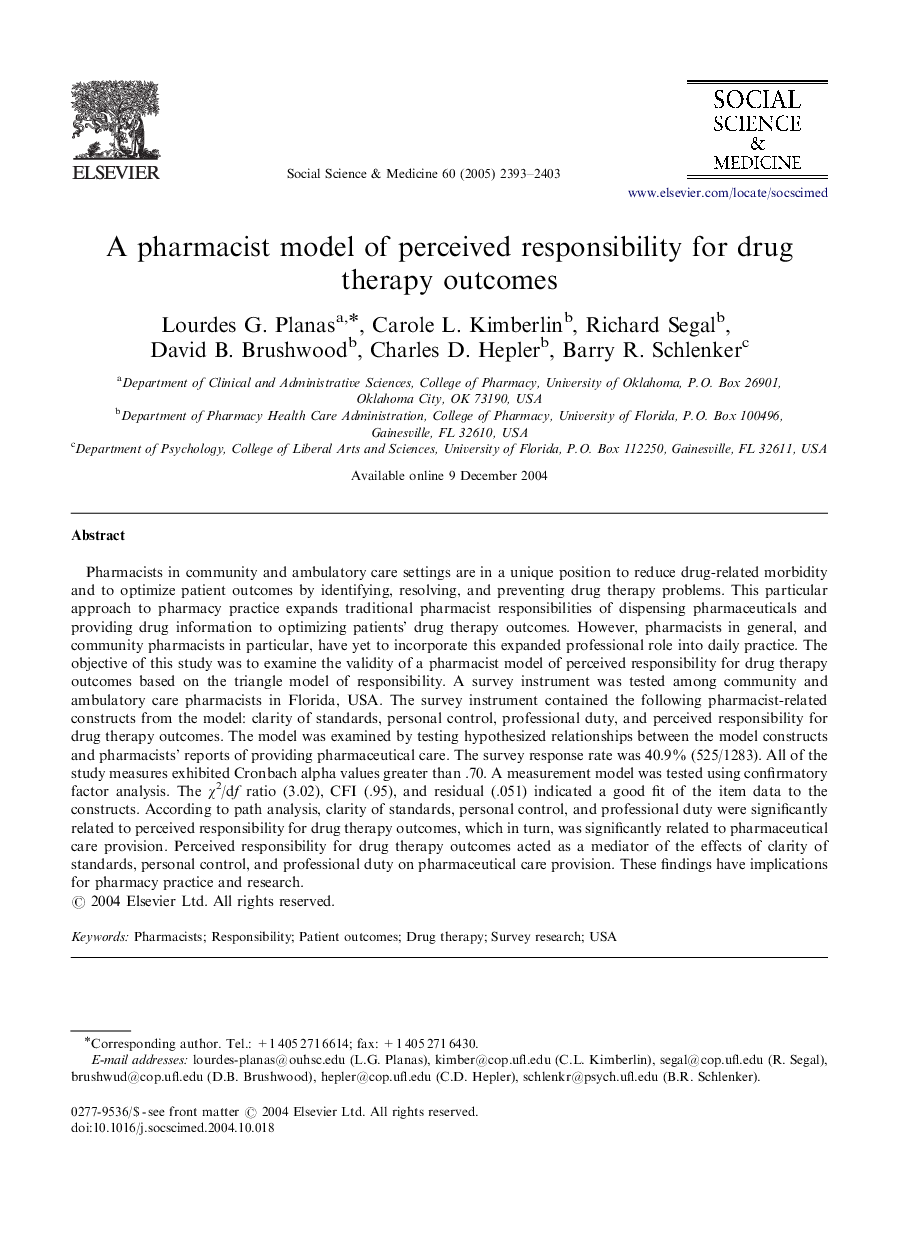| کد مقاله | کد نشریه | سال انتشار | مقاله انگلیسی | نسخه تمام متن |
|---|---|---|---|---|
| 955288 | 927728 | 2005 | 11 صفحه PDF | دانلود رایگان |

Pharmacists in community and ambulatory care settings are in a unique position to reduce drug-related morbidity and to optimize patient outcomes by identifying, resolving, and preventing drug therapy problems. This particular approach to pharmacy practice expands traditional pharmacist responsibilities of dispensing pharmaceuticals and providing drug information to optimizing patients’ drug therapy outcomes. However, pharmacists in general, and community pharmacists in particular, have yet to incorporate this expanded professional role into daily practice. The objective of this study was to examine the validity of a pharmacist model of perceived responsibility for drug therapy outcomes based on the triangle model of responsibility. A survey instrument was tested among community and ambulatory care pharmacists in Florida, USA. The survey instrument contained the following pharmacist-related constructs from the model: clarity of standards, personal control, professional duty, and perceived responsibility for drug therapy outcomes. The model was examined by testing hypothesized relationships between the model constructs and pharmacists’ reports of providing pharmaceutical care. The survey response rate was 40.9% (525/1283). All of the study measures exhibited Cronbach alpha values greater than .70. A measurement model was tested using confirmatory factor analysis. The χ2/df ratio (3.02), CFI (.95), and residual (.051) indicated a good fit of the item data to the constructs. According to path analysis, clarity of standards, personal control, and professional duty were significantly related to perceived responsibility for drug therapy outcomes, which in turn, was significantly related to pharmaceutical care provision. Perceived responsibility for drug therapy outcomes acted as a mediator of the effects of clarity of standards, personal control, and professional duty on pharmaceutical care provision. These findings have implications for pharmacy practice and research.
Journal: Social Science & Medicine - Volume 60, Issue 10, May 2005, Pages 2393–2403